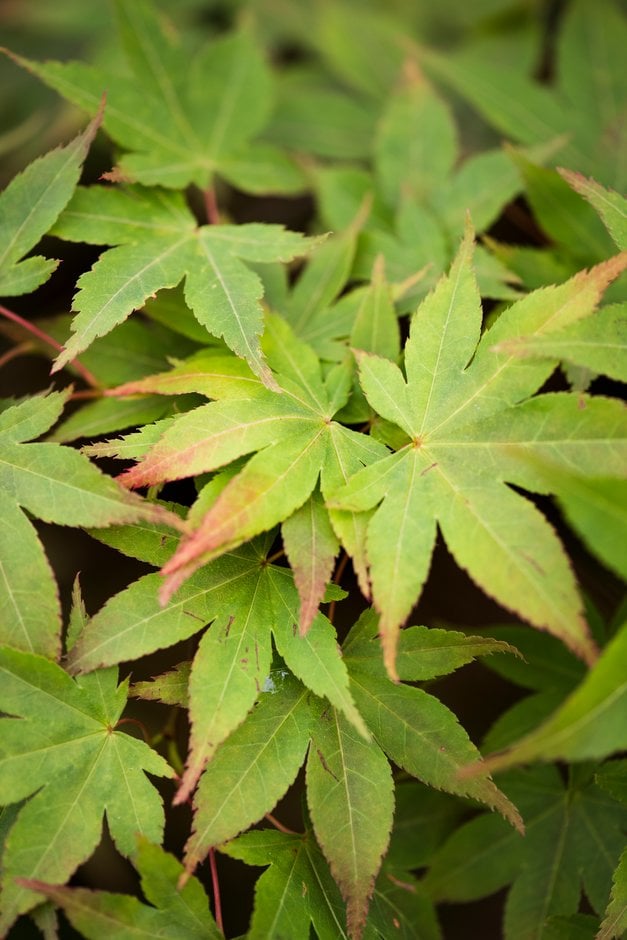Acer palmatum 'Golden Pond' (A)
Japanese maple 'Golden Pond'
A small tree up to 3m high and 4.5m wide, with finely toothed, medium-sized, seven-lobed leaves, which are mid-green, tinged with bronze in spring, and turn deep golden yellow in autumn, and tiny, purple-red flowers in small, pendent corymbs in spring followed by red-winged fruit in late summer

Buy this plant
Size
Ultimate height
2.5–4 metresTime to ultimate height
20–50 yearsUltimate spread
4–8 metresGrowing conditions
Moisture
Moist but well–drainedpH
Acid, NeutralColour & scent
| Stem | Flower | Foliage | Fruit | |
| Spring | Red | Bronze Green | ||
|---|---|---|---|---|
| Summer | Green | Red | ||
| Autumn | Gold Yellow | |||
| Winter |
Position
- Full sun
- Partial shade
Aspect
South–facing or North–facing or West–facing or East–facing
Exposure
Sheltered Hardiness
H6Botanical details
- Family
- Sapindaceae
- Native to GB / Ireland
- No
- Foliage
- Deciduous
- Habit
- Spreading branched
- Genus
Acer can be deciduous trees or large shrubs with paired, often palmately-lobed leaves and small flowers followed by characteristic winged fruits. Many have fine autumn colour, and some have ornamental stems
- Name status
Accepted
- Horticultural Group
- Acers in this amoenum group have large, palm-shaped leaves with finely-toothed edges
How to grow
Cultivation
Grow in a place sheltered from cold drying winds and from late frosts, in light dappled shade or in sun but with shade at the hottest part of the day, in moist but well-drained neutral or acidic soil that does not dry out in summer or become waterlogged in winter, and protect roots with an open-textured organic mulch such as coarse bark; for more advice, see Japanese maple cultivation
Propagation
Propagate by grafting in late winter, or by budding in summer; semi-ripe cuttings, hardwood cuttings, or layering may also be successful
Suggested planting locations and garden types
- City and courtyard gardens
- Cottage and informal garden
- Low Maintenance
- Banks and slopes
- Flower borders and beds
- Hedging and screens
Pruning
Pruning group 1 (little or no pruning of trees and shrubs) and prune if necessary only from late autumn to midwinter
Pests
May be susceptible to Acer gall mite, aphids, caterpillars and horse chestnut scale
Diseases
May be susceptible to Verticillium wilt, Acer leaf scorch and honey fungus
Get involved
The RHS is the UK’s gardening charity, helping people and plants to grow - nurturing a healthier, happier world, one person and one plant at a time.